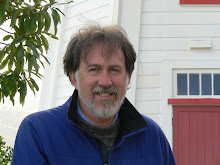The Making of a Roving Locum
Like almost all developed nations, New Zealand has a shortage of qualified primary care physicians. Why is this important? It’s because the efficiency, cost -effectiveness, and overall success of a delivery system measured in health outcomes are all directly related to the successful delivery of primary care. Without organized universal access and rational implementation of effective primary care strategies, costs soar and outcomes worsen. And in real terms, it is patients who suffer in proportion to the unavailability of this vital building block of any health system.
Why the worldwide shortage? The reasons that are as varied as the health systems themselves, but it has a lot to do with the hard work, long hours, low prestige, lower pay, socially disadvantaged patient populations, and non-urban settings that are often part and parcel of the practice of primary care.
As with many aspects of healthcare in the United States, issues surrounding primary care are complicated. On one hand, the United States represents the world’s single largest net recipient of primary care physicians trained overseas, often in countries that can ill afford to lose these physicians. On the other hand, there persists in the United States perhaps the greatest maldistribution of primary care vis-a-vis specialty physicians in any healthcare system in the developed world. The World Health Organization recommends that approximate 70% of the physician workforce be represented by primary care. In the US it’s almost the opposite, with the predictable excess expenditures, discontinuity, and general lack of access that all too often characterizes US healthcare.
In New Zealand there are far fewer organizational and systemic impediments to the provision of adequate primary care. With the legislative establishment of primary care organizations (PHOs) in 2001, which provided the organizational basis for the entire country, the philosophical, political, and to some degree economic commitment to primary care was made. Unfortunately, there is still a significant net loss of primary care physicians to countries with higher pay scales, most notably Australia and Canada. In an attempt to provide short-term (and ultimately long-term) coverage, the use of temporary physicians known as locum tenens is common.
There are several for-profit and nonprofit agencies that seek to facilitate the placement of both New Zealand and foreign physicians in such positions. I opted to utilize an agency known as NZ Locums, a nonprofit affiliated with The New Zealand Rural General Practice Network, NZRGPN. NZ Locums was my initial point of contact in the process and I’ve been working closely with them for a number of months to deal with the numerous credentialing, visa, and logistical requirements required to make such a placement occur smoothly. I would like to say publicly that NZ Locums did a great job and was a pleasure to work with.
The final component of my placement entailed a three day orientation during which time I was briefed by representatives of various agencies and organizations that a practicing physician must deal with here. The sessions included presentations by Pharmac, the New Zealand national formulary; ACC, the New Zealand accident compensation scheme;WINZ, the national income and disability program; the Medical Protection Society, a physician advocacy organization in the event of disciplinary action (it should be noted that in the event of malpractice, patient compensation and physician liability are separate and not subject to the contingency-based litigation).
Needless to say, these sessions were invaluable. Equally important was a talk on the day-to-day realities and demands of primary care practice. The orientation ended with an excellent discussion of the growing movement in New Zealand toward biculturalism. This took place in the National Museum,Te Papa, in Wellington. The two-hour tour was led by two extremely articulate and knowledgeable young Maori women who covered topics ranging from cultural issues in medical encounters to the often troubled history of interaction between the indigenous Maori and the European colonialists. I came away from the session with a much better appreciation for and understanding of the past and the new bicultural future being forged here in this country.
Finally, to round out my medical immersion in the New Zealand primary care world I had the opportunity to attend the annual New Zealand Rural General Practice Network conference for 2 days in Christchurch. It began with a traditional Maori Mihi Whakatau, an invocation ceremony of welcome and thanks that includes Waita (song) and the performance of Hongi, the pressing of the nose, a symbolic sharing of the breath of life which brings all together for the event. I was able to meet numerous doctors and even have conversations with a few colleagues from the US who have made longer-term commitments to practice here. Indicative of the personal scale of this country, there was a two-hour session during which the NZ minister of health,Tony Ryall, addressed the conferees and detailed concrete political measures being taken by the New Zealand government to address primary care shortages. (Imagine Kathleen Sibelius speaking to a convention of rural primary care physicians with actual policies to address actual needs!). Most inspirational was the chance to meet New Zealand medical students and registrars (what we call residents) whose intelligence and enthusiasm were really quite inspirational and cannot help but bode well for the future primary care here.
Today I arrived at my first rural placement where I begin on Monday morning. I plan to use my Sunday to practice left-sided driving on the quiet country roads and to gear up for day one.


No comments:
Post a Comment